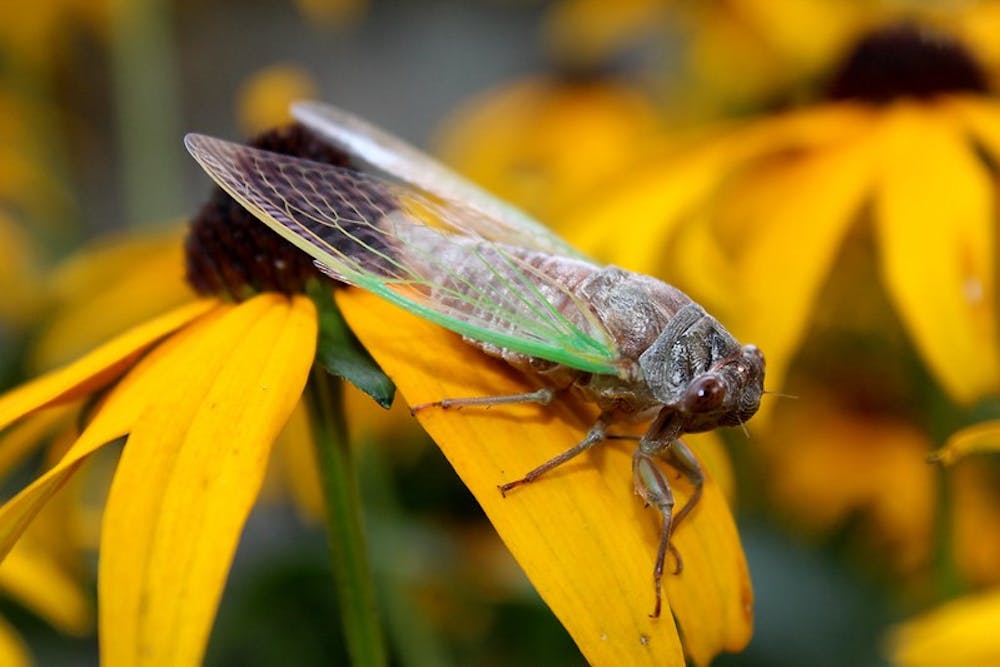At the end of April, it is estimated 213 billion cicadas will emerge in Monroe County.
Brood X, one of the largest groups of periodical cicadas and known for its loud mating call, will come out of the ground across the Eastern United States after 17 years spent underground.
Armin Moczek, IU professor of biology, said this group of cicadas will be massive, with half a trillion cicadas emerging in Indiana, starting in late April or early May.
“It is the godzilla of geographical cicadas,” Moczek said.
While most cicadas have a two to four year life cycle, about three cicada species have a 13 to 17 year life cycle, including Brood X.
Different broods have a different geographical expansion. Brood X will appear across the Eastern U.S., with dense populations appearing across Indiana, Kentucky, Tennessee and parts of Maryland, Pennsylvania and New Jersey.
For many people, the word “cicada” is synonymous with “locust,” which is incorrect. Purdue University entomologist Elizabeth Barnes said the insects are very different.
“People hear ‘locust emergence’ and think it’s going to be this mass destruction,” Barnes said. “Really, all the cicadas do is climb up into the trees and sing their heads off and then they die.”
The cicadas will wait to surface when the ground reaches a temperature of about 64 degrees, Barnes said. They will then crawl up trees and shed a thin shell to show orange eyes and wings.
“They’ve already started to emerge,” Moczek said. “It just depends on how hard you look.”
The cicadas do not sting or bite humans and do not carry diseases. Gene Kritsky, dean of behavioral and natural sciences at Mount St. Joseph University in Cincinnati, Ohio, said cicadas can even be eaten by humans. He said cicadas have a good balance of vitamins and are high in protein.
Animals such as raccoons, squirrels, birds and other wildlife will eat the cicadas as well. Dogs might try to eat the cicadas, and might get upset stomachs from eating them, the American Kennel Club said.
Kritsky said the best way to identify the cicadas is by their loud mating call.
The primary reason for cicada emergence is to mate, Kritsky said. Hence, their loud mating calls. A female cicada will respond by flicking her wings, and the male will turn around to face where he heard the call and respond. If she responds again, he will approach her to mate.
“Large numbers of male cicadas will gather in trees and sing together, called a chorusing center,” Kritsky said.
Male cicadas die after intercourse, and females die after laying their eggs, Kritsky said. One female can lay approximately 10 to 20 eggs.
The cicadas have numerous ecological benefits, Kritsky said. They feed predators and their emergence holes help to ventilate soil and can help the natural pruning of trees.
“After the cicadas die, their bodies contribute nitrogen and other nutrients to the soil,” Kritsky said.
Females make cuts into branches and deposit the eggs, where they will remain for six to 10 weeks until they hatch in late July to early August.
However, if a female cicada lays an egg in a sapling’s new growth, it can be harmful to the growth of the tree. Homeowners should wrap young trees in netting with small holes, such as a cheesecloth, to protect them from cicadas.
The young cicadas will crawl out of the tree back into the ground to avoid susceptibility to other predators for another 17 years, Kritsky said.






